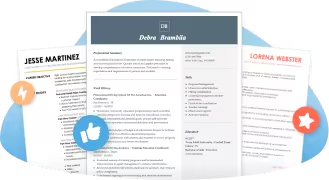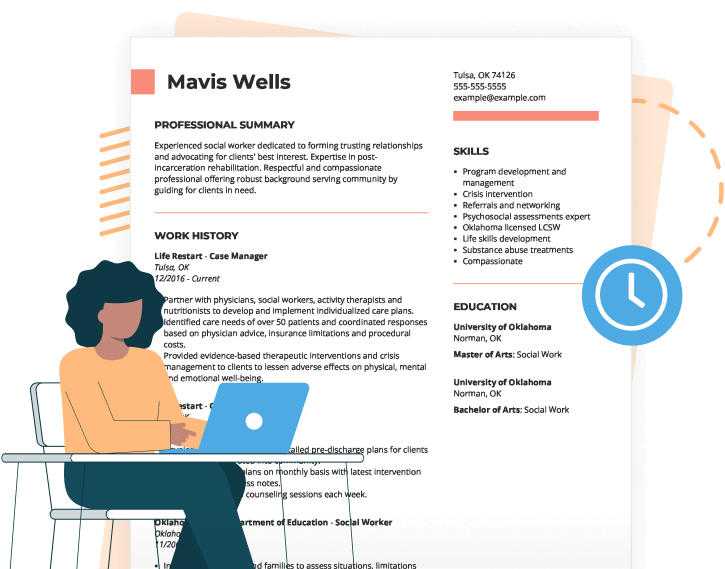Featured Resume Example
Our historian resume is one of the most visited history resume examples. To see more cover letters and resume samples, scroll down.
Search History Jobs
History Resumes by Job Title
Find the resume example you need by browsing these specific History categories:
History resume samples (3)
Job Outlook
Approximately 300 historian job openings are projected every year until 2032, according to the U.S. Bureau of Labor Statistics (BLS).
3 Tips for Writing History Resumes
Pick the right format for your experience level
How you outline your qualifications is as important as the information you share. Three optimal resume formats help emphasize your accomplishments based on your experience level.
- Chronological resume: The work-based chronological format emphasizes your formal job titles, previous employers, and consistent work history. Use this if you have over 10 years of experience with notable job growth.
- Combination resume: Also known as the hybrid resume, this format showcases your skills and work experience. Use this if you have three to nine years of experience, including your Ph.D. research, teaching assistant experience and full-time historian jobs.
- Functional resume: Use this skills-based resume to highlight your academic specialties or history focus and their related research and discoveries. This format is best for applying for a new graduate degree or teaching position.
Use history-focused skills
Here’s a list of commonly used skills to consider adding to your resume.
- Critical thinking
- Data analysis
- Digital archiving
- Documentation and cataloging
- Historical research
- Museum or exhibition planning
- Primary source evaluation
- Project management
- Public speaking and presentation skills
- Writing and communication skills
Use a professional template
A simple, well-organized resume template can help you present your academic and professional qualifications in a clear, organized document. The clear section labels and optimized margins minimize eye strain and help hiring managers focus on your information.
Consider using these professional templates or a digital writing tool like our award-winning Resume Builder.
History Resume FAQ
How much does a job in history get paid?
The median pay is $64,540 for historian jobs, according to the BLS. This salary can range from $45,050 to $104,670, depending on your employment and industry.
What should I put on my history resume?
These history resume examples feature the following information:
- Contact information: Put your full name, phone number, email address and general location at the top of your resume.
- Introduction: The average hiring manager spends six seconds on your resume. Optimize the upper half of your resume with a resume objective or summary statement.
- Education: Focus on your academic achievements, including your degrees, publications, research projects or notable discoveries.
- Experience: Dedicate your work history section to your experience in historical methodologies, critical analysis or research contributions.
- Skills: Create a dedicated skills section prioritizing your technical skills like historical research, data analysis or language proficiency.
Should I include a cover letter with my history resume?
Yes, a cover letter offers the opportunity to express your passion for a historical era or field of study. You can dedicate this letter to highlight crucial achievements, job-relevant skills or your potential contribution to the open job.
Download one of our free cover letter templates or use a Cover Letter Generator to find professional templates, customizable text templates, and professional writing support.







